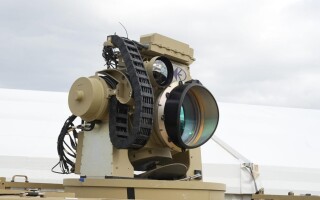VME lives!
StoryFebruary 09, 2018
As we start a new year, it is customary to look ahead at emerging technologies, both evolutionary and revolutionary. But as the calendar changes, it is also a time to reflect on the past and where we are today. Although recent years have produced few entirely new platforms designed from the ground up, our industry continues to deliver higher levels of performance and new capabilities within existing systems.
As we start a new year, it is customary to look ahead at emerging technologies, both evolutionary and revolutionary. But as the calendar changes, it is also a time to reflect on the past and where we are today. Although recent years have produced few entirely new platforms designed from the ground up, our industry continues to deliver higher levels of performance and new capabilities within existing systems.
In the VPX ecosystem that powers today’s advanced signal processing systems and mission computers, new signaling technologies and design techniques have delivered tremendous leaps in processing power. At the same time, innovative engineering has continued to extend the life of systems based on legacy technologies such as VME. For a substantial segment of the embedded commercial off-the-shelf (COTS) mar- ket that does not require the highest levels of performance, VME remains “good enough” to meet the need.
Fully 30 years after a VITA committee first defined a standard, VME modules continue to power some of the most essential systems. Keeping these systems viable means addressing the challenges of obsolescence and introducing new technology to address emerging requirements, such as the need for trusted computing. Fortunately, the industry continues to deliver new form/fit/function-compatible modules that provide contemporary technology for tech insertions and upgrades. Legacy VME systems may not need the system-level performance of VPX, but they can still take advantage of the improved performance available from the latest-generation processors and network de- vices (not to mention integrated graphics functionality that used to require a separate mezzanine card or slot).
The good news for teams that depend on VME: VME lives! While sometimes overshadowed by the impressive features of new 3U and 6U VPX offerings that dominate the headlines, new, more powerful VME cards continue to be released to support legacy VME system upgrades. In addition, product road maps point to an ongoing stream of new VME products including single-board computers, switches, and supporting peripherals.
Ensuring the continued vitality of VME has required some effort; COTS vendors are investing to ensure that VME remains available. Confronted with the news a while back that the popular Tsi148 (TEMPE) VMEbus bridge chip was being discontinued, the industry turned to FPGA-based PCIe-to-VME64x solutions to ensure that support for VME systems will continue for many years to come.
It should be noted that not every challenge in keeping VME is going to fall on the vendors of COTS modules. Technology insertions generally do require updates to drivers and application software as well, even if one is simply migrating to newer devices within the same architecture family, and especially when changing processor architectures (for example, from Power Architecture [PA] to ARM, PA to x86, or x86 to ARM). Managing power requirements to stay within the envelope of a legacy system can be yet another hurdle.
When designing a new system, integrators typically turn to VPX to get access to the latest and greatest hardware and software, and to take advantage of higher-performance backplane interconnect speeds. But if we consider the vast amount of deployed technology in the field, whether in the air or on the ground, much of it still resides in VME chassis. With many systems ripe for a technol- ogy refresh, integrators looking for an evolution in performance and capa- bilities recognize the economic appeal of module upgrades that do not require a full system redesign and the costs associated with introducing these significant redesigns to the platform.
The good news is that COTS vendors remain committed to this form factor. One example is the Curtiss-Wight VME-690 Gigabit Ethernet switch, a form/fit/function replacement for older VME-682 slots. This new 24-port 6U VMEbus Gigabit Ethernet (GbE) switch module can offer VME system integrators a fresh device life cycle, new networking features, and improved cybersecurity posture. The third-generation VME switch requires less power (~35 W) than earlier designs and adds data-security features, enabling system designers to modernize their legacy VME system with updated communications technology. (Figure 1.)
Figure 1: The VME-690 Gigabit Ethernet switch module supports as many as 24 interfaces and integrates data-security features.
As the industry looks forward to a new year full of bleeding-edge VPX products for the design of high-performance systems, it’s also worth remembering that the venerable VME architecture is not going away any time soon. In the years to come, the COTS community will continue to support this important installed base with a range of computing and connectivity products.
Andrew McCoubrey is the product marketing manager, switching and routing solutions, for Curtiss-Wright Defense Solutions.
Curtiss-Wright Defense Solutions www.curtisswrightds.com







